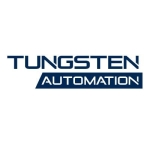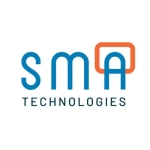What is our primary use case?
We are using UiPath Studio, Orchestrator, and attended bots.
We are automating 12 shared services processes. They are from the finance, HR, and procurement areas. These processes are run at a high frequency and are required to be captured on two different platforms. We have implemented this solution to stop entry clerks from having to do the same job twice, on two different platforms.
We run automations in a virtual environment and it is successful. The implementation was fast and we realized the benefits quickly. Currently, we have deployed three processes and we are going to roll out more processes in patches.
With respect to how easy it is to automate our company's processes, on a scale of one to five, I would rate this solution a four. Some of these processes have difficult exceptions that had to be handled, which is why we opted for the attended robots.
On a scale of one to five, judging how beneficial it is, I would rate the training a five. The training is rich in content and the material, products, and methodologies are explained well. The concept of automation can be very easily digested by anyone, even if they are non-technical.
From the point that we purchased our UiPath license until we had our first robot was approximately a month and a half. I was not the person doing the configuration, but I managed the process through interaction with the technical team. It was a straightforward and easy process.
How has it helped my organization?
We have realized performance benefits through the use of this solution. We were able to decrease the processing time of one of the processes from 15 minutes, under certain assumptions, to one minute and four seconds.
One of the calculations that we have done to determine the time we have saved is for one type of process. It used to take 7,000 person-days each year but now takes only 160 person-days a year.
Using this solution has eliminated a lot of human errors. It is now done based on preset values, activities, and rules. Exceptions are properly handled and the robot will take the information from the source system, which is fundamentally correct all of the time. The robot only needs to capture the data as it is from the source, and copy it to the destination, and this eliminates the errors. When humans are in the middle of the process, mistakes can happen.
What is most valuable?
The design capability in Studio is great.
The way that you can monitor the robots within Orchestrator is helpful.
Together, the aggregated features add value to the day-to-day operations of the business.
What needs improvement?
I would like to see more options in terms of configuration.
More information should be made available on the AI Fabric features, and how it can be used as part of a larger ecosystem.
Unattended robots could be cheaper.
What do I think about the stability of the solution?
So far, we have not noticed any crashes or any issues with the platform itself.
What do I think about the scalability of the solution?
In total with the partner that we are working with, we have 12 team members.
Which solution did I use previously and why did I switch?
We did not use another RPA solution prior to this one.
RPA was on the strategic roadmap for the transformation of the organization. When we came across this plan for the shared service teams and operations, we started to build a use case and try to see how RPA can help us. Basically, it's a strategic thing for my organization and we will continue scaling it up to other business areas.
What about the implementation team?
We had assistance from a local partner in Saudi Arabia. I would rate our experience with them five out of five. They have the right capabilities and the right knowledge. They were committed and dedicated to the successful completion of this project.
Which other solutions did I evaluate?
We did not evaluate other options before choosing this solution. The capabilities of the platform are good, as is their presence in the market. They have a very qualified team that gives you all the possible support, can answer your questions, collaborate with you, and ensure that you are on the right path to completing your automation projects. They try as much as possible to make your story a success.
They handled the PoC for us, and we implemented the full solution as soon as it was successful.
What other advice do I have?
The time freed up for our employees allows us to enhance and scale up their competencies and capabilities.
This solution is very good. The team is effective and they are constantly focusing on the product's roadmap and enhancements. As a platform in the ecosystem, this is a promising product for anyone who is considering automation projects in any organization.
My advice to anybody who is researching this type of solution is to have a look at UiPath. Take an in-depth look at their fabulous knowledge base that is available on the product.
I would rate this solution a nine out of ten.
Which deployment model are you using for this solution?
On-premises
Disclosure: My company does not have a business relationship with this vendor other than being a customer.

















